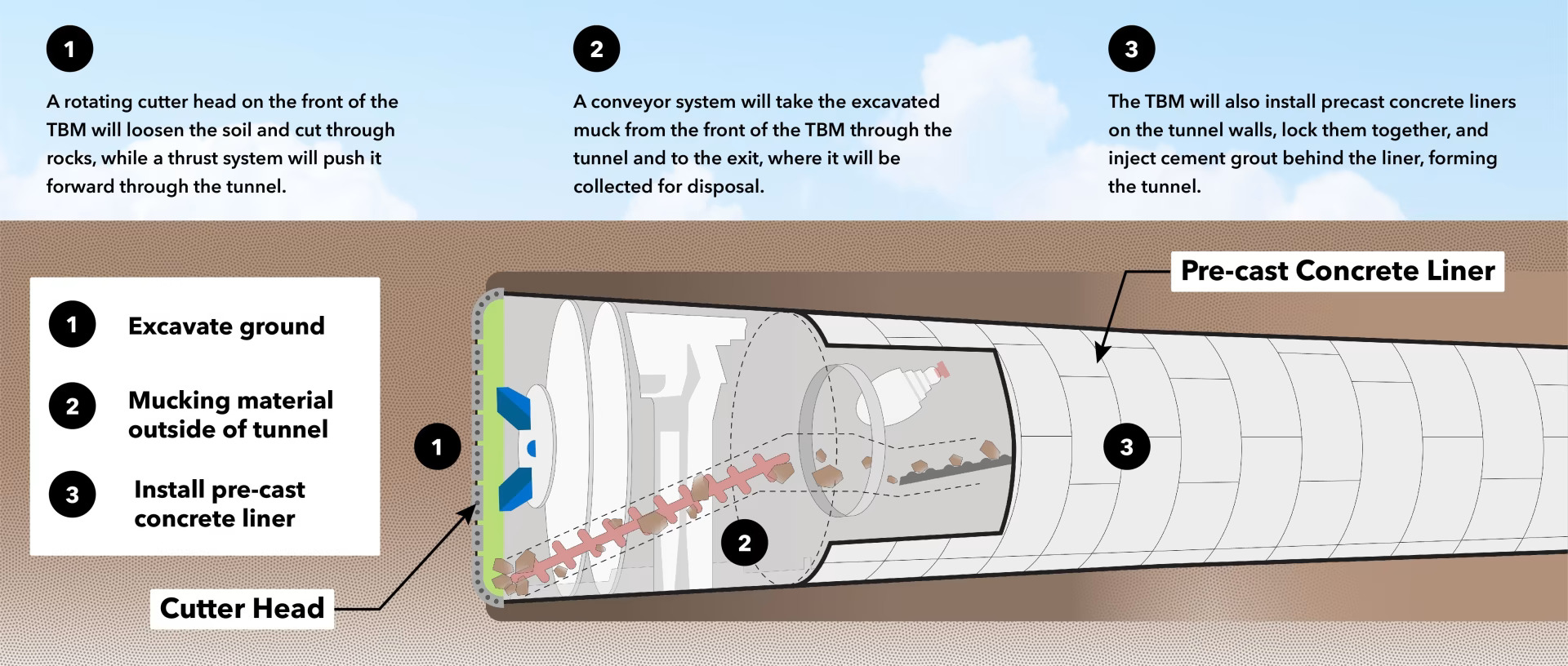Tunnel Boring Machines for the Eglinton Crosstown West Extension
02-08-2023
Did you know that the tunnel boring machines for the Eglinton Crosstown West Extension are “earth pressure balance” TBMs? This means the pressure inside the TBM adjusts to match the pressure of the earth outside, preventing ground settlement.
Tunnel boring has proven to be an efficient, safe and reliable way to dig new tunnels for transit lines in built-up areas and it is being used to build Metrolinx projects like the Eglinton Crosstown West Extension. This method relies on tunnel boring machines – or TBMs – which tunnel under existing structures and roadways. These machines can be as long as a football field and have a rotating cutter head at the front end that carefully digs through the earth.
Each tunnel boring machine is custom built for the job it is needed for. The size, type of cutter head and other engineering details are chosen based on each project’s needs and customized for the ground conditions the machines are expected to encounter as they carve out the route of a new transit line.
Tunnelling under existing structures — big or small — is how subways are built in the Greater Toronto Area and cities all over the world. Modern tunnel boring machines adapt to all kinds of underground conditions, like densely packed soil, rock or areas with high water pressure.
Earth pressure balance technology built into the tunnel boring machine helps it make those transitions smoothly. The pressure applied by the TBM can be controlled to match the combined pressure of the earth and water being excavated. This helps keep the ground stable as the machines work deep below the homes, buildings and roads at the surface.
Excavated soils and rock (referred to as muck) are removed by a system of conveyors from inside the tunnel boring machine and transported back to the surface to be hauled away and properly disposed.
As the tunnel is being dug out, the tunnel boring machine uses a built-in mechanical device called a segment erector to install pre-cast reinforced concrete liner panels (called segments) to form the tunnel walls. Each segment is fastened into place, and cement grout is injected behind them to form sturdy rings. The machine moves itself forward with hydraulic jacks to push off of the newly installed segment ring.
Illustration By Metrolinx


